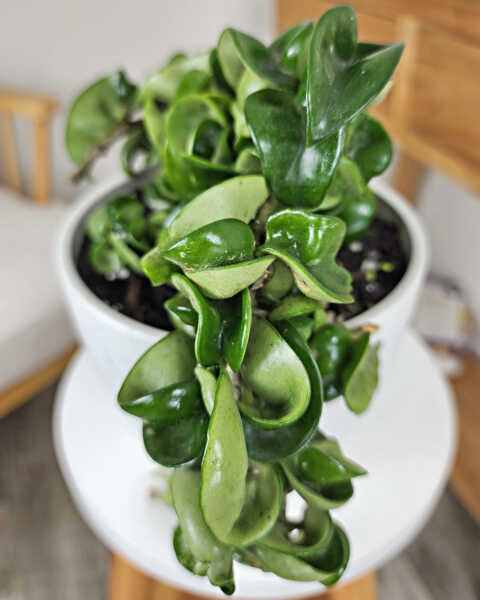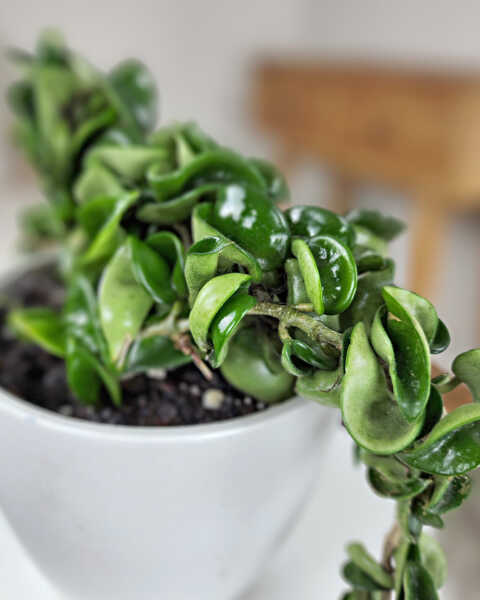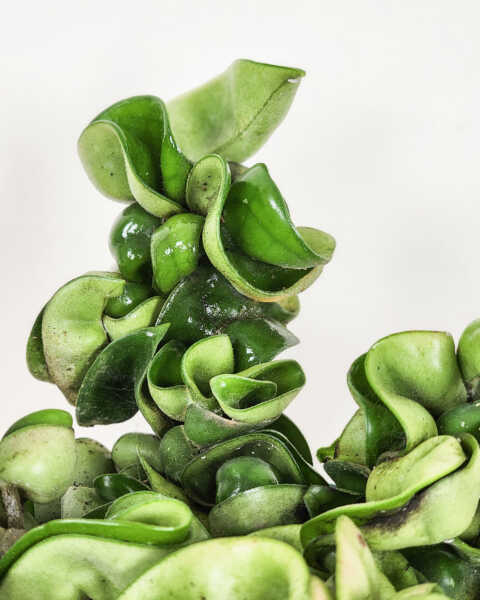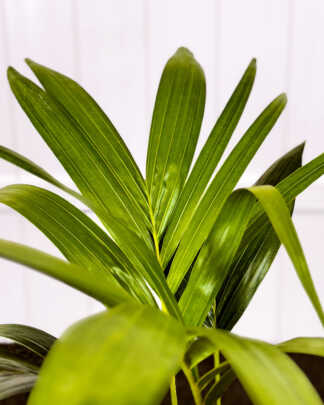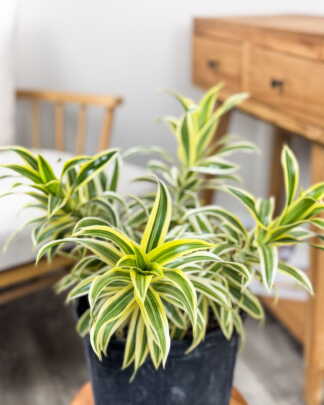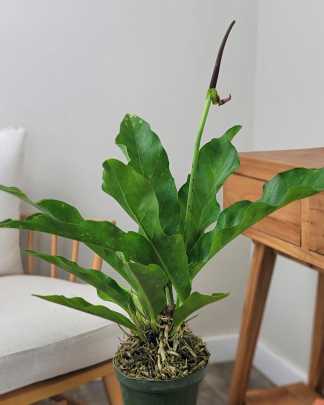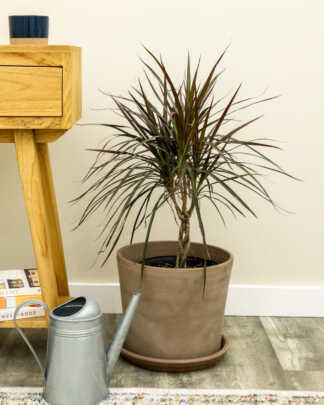Description
Caring for your Hindu Rope Hoya
The Hindu Rope Hoya, scientifically known as Hoya carnosa ‘Compacta,’ is a stunning and unique houseplant characterized by its twisted, rope-like vines and waxy, star-shaped flowers. It’s a low-maintenance plant, making it a popular choice for both novice and experienced gardeners.
Light
Hindu Rope Hoyas thrive in bright, indirect light. They can tolerate some direct morning sunlight, but too much direct sun can scorch their leaves. Near east or west-facing windows is ideal. If the light is too intense, use a sheer curtain to diffuse it. If natural light is insufficient, consider supplementing with grow lights.
Soil
A well-draining potting mix is crucial. You can use a commercial cactus or succulent mix or create your own mix using two parts potting soil, one part perlite, and one part orchid bark. Aim for a slightly acidic to neutral pH, between 6.0 and 7.5.
Water
Water when the top inch of the soil feels dry. This could be about once a week, but it’s essential to adjust based on your home’s humidity and temperature. Be cautious of over-watering, as it can lead to root rot. Ensure the pot has drainage holes. Hindu Rope Hoyas enjoy high humidity. Consider placing them on a humidity tray or using a humidifier, especially in dry conditions.
Fertilizer
Feed your Hoya a balanced, water-soluble fertilizer every month during the growing season (spring and summer). Reduce feeding to every other month in fall and winter. Use a fertilizer with a higher phosphorus content to encourage blooming. Always dilute the fertilizer to half the recommended strength to avoid over-fertilizing.
Pruning
Prune your Hoya in the spring to maintain its shape and encourage fuller growth. Use clean, sharp scissors to remove any dead or yellowing leaves and trim any overly long vines if desired. The pruned stems can be propagated in water or soil to grow new plants.
Pests & Diseases
Look out for aphids, mealybugs, and spider mites. Regularly check the undersides of leaves. Treat infestations promptly with insecticidal soap or neem oil. Avoid over-watering and ensure good air circulation to prevent fungal diseases.

